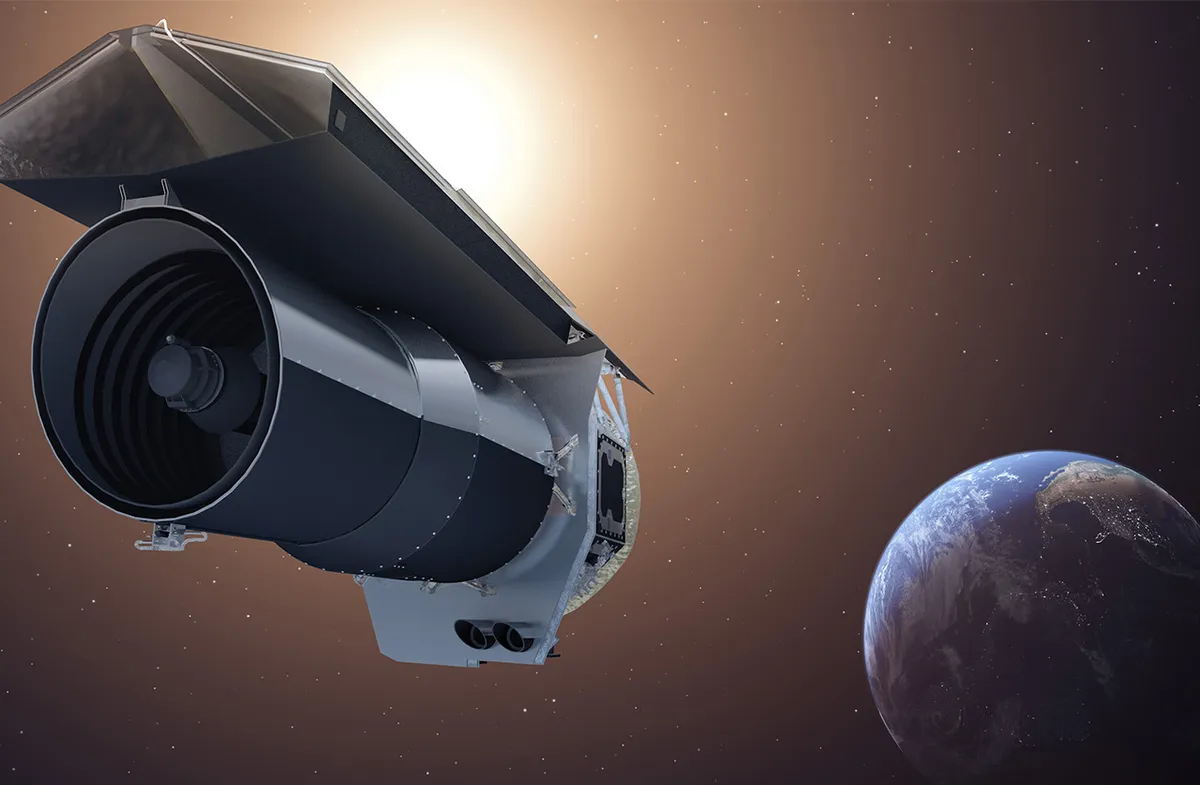Zeta Reticuli is a binary star system that can be found in the constellation of Reticulum and is visible in the night sky from the southern hemisphere.
The Zeta Reticuli binary pair cannot be seen from the UK, but it's certainly worth seeking out if you find yourself under the southern hemisphere sky looking for celestial objects that would otherwise be out of range.
Zeta Reticuli can be seen clearly as a double star even with the naked eye, provided you're viewing it under properly dark skies.

Zeta Reticulli's double stars
The two stars, Zeta 1 (ζ1) Reticuli and Zeta 2 (ζ2) Reticuli are located just over 39 lightyears from Earth and are separated from each other by a distance of at least 3,750 Astronomical Units (AU), where 1 AU is the average distance between Earth and the Sun.
The stars orbit a common centre of gravity over a period likely more than 170,000 Earth years, and are thought to be between 1.5 and 3 billions years old.
What makes these stars really interesting is that, relatively speaking, they are much like our own Sun.
This makes them so-called solar analogs, and of interest to astronomers who can compare them to our Solar System's host star.
Zeta 1 Reticuli has a mass equal to about 96% that of the Sun, and a radius about 92% of the Sun.
It is a yellow main sequence star of class G3 with a magnitude or brightness of +5.52.
For info on what this means, read our guide to stellar spectral classifications and stellar magnitude.
Zeta 2 is about 99% the mass and 99% the radius of the Sun. It's slightly brighter at magnitude +5.22 and is a yellow dwarf of class G2.
Planets around Zeta Reticuli?

Because the Zeta Reticulli stars are similar to our Sun, if an Earth-like planet were in orbit around the stars at the right distance, liquid water might be able to pool on that planet's surface.
That means the conditions might be right for life as we know it to flourish.
In 1996, astronomers announced the potential presence of a so-called 'hot Jupiter' exoplanet – a gas giant similar to Jupiter but much closer to its star than Jupiter is to the Sun – in orbit around Zeta 2.
It had seemingly been detected due to observations of the star's wobble (which can often be attributed to the gravitational pull of a planet in orbit around a star), but this was eventually retracted.

Then in 2007, infrared observations with the Spitzer Space telescope showed evidence of a dusty disc of cosmic debris surrounding star Zeta 2, the same sort of disc out of which planets could potentially form.
Herschel Space Observatory data in 2010 confirmed the presence of a disc around the star, but revealed that the disc was asymmetrical in structure.
Then in 2018 a paper was released that showed 'no common proper motion' between the lobed structure of the disc and Zeta 2, suggesting the asymmetry wasn't caused by a planet in orbit.
To date, no exoplanet has been confirmed around either star, which brings us nicely onto one of the reasons Zeta Reticuli is known popularly outside of astronomy and science circles.
Zeta Reticuli, Betty and Barney Hill
Zeta Reticuli is known among UFO enthusiasts as the home of a species of alien life forms who allegedly visited Earth in the 1960s and abducted a married couple by the name of Betty and Barney Hill.
We at BBC Sky at Night Magazine generally view tales of alien abductions with an overall skeptical – at very least empirical – approach.
In fact, we do recommend a read of our list of things commonly mistaken for UFOs.
Nevetheless, this is certainly a curious chapter in humanity's relationship with Zeta Reticuli.
It's also one reason why people outside of practical astronomy are interested in the stellar system.

The interesting aspect of the Betty and Barney Hill case is that it wasn't initially their intention for their tale to be made public.
But also that they were intelligent, respected members of both their community and of the Civil Rights movement at the time.
Consequently, they potentially had a lot to lose, should their story have ever come to light (which it did).
Their account begins on the night of 19/20 September 1961 as they were returning to their New Hampshire home, having spent their honeymoon in Montreal, Canada.
While driving through the White Mountains of New Hampshire, the couple say they were followed by an unusual light in the sky.
According to their account, they observed through binoculars that the strange light was in fact a flying spacecraft, and they could see non-human lifeforms through the craft's windows.
When they arrived home, the Hills' journey had taken a few hours longer than it should have, and they had sustained minor injuries and cuts and scuffs on their clothing and shoes.

Barney Hill began suffering from ulcers, which were diagnosed by their local doctor as being a result of stress.
They sought the help of Benjamin Simon, a lauded psychiatrist who had treated World War II veterans for post-traumatic stress.
Under hypnosis, Betty and Barney began to relay their story, which detailed their abduction onboard a strange spacecraft and conversations with non-human lifeforms.
While Simon remained sceptical about the prospect of their having been visited by lifeforms from beyond Earth, the psychiatrist would later comment that Barney Hill had undoubtedly experienced an extreme level of trauma, similar to what he had seen while treating war veterans.
The Hills had initially not wanted to make their story public, but it was discovered and reported by a New York Times journalist, and made headlines around the world.

Betty later drew an astronomical map of sorts – which has since become known as the Betty Hill star map – that she had purportedly seen aboard the spacecraft, and which is claimed by some as indicating the aliens in question originated from the Zeta Reticuli star system.
If you've ever heard of aliens referred to as 'Zeta Reticulans', now you know why.
There is a particularly brilliant analysis of this story available on the website of the Armagh Planetarium, which is located in Armagh, Northern Ireland.
So what of Betty and Barney's story and Zeta Reticuli?
As observations with humanity's most powerful space telescopes have concluded thus far, there is no exoplanet in orbit around Zeta 2 Reticuli: at least, not a Jupiter or Saturn-mass planet in any case.
And whether or not we believe that Betty and Barney did experience some sort of inexplicable phenomena that night, it is nevertheless a fascinating tale surrounding the Zeta Reticuli star system and its place in popular folklore.
